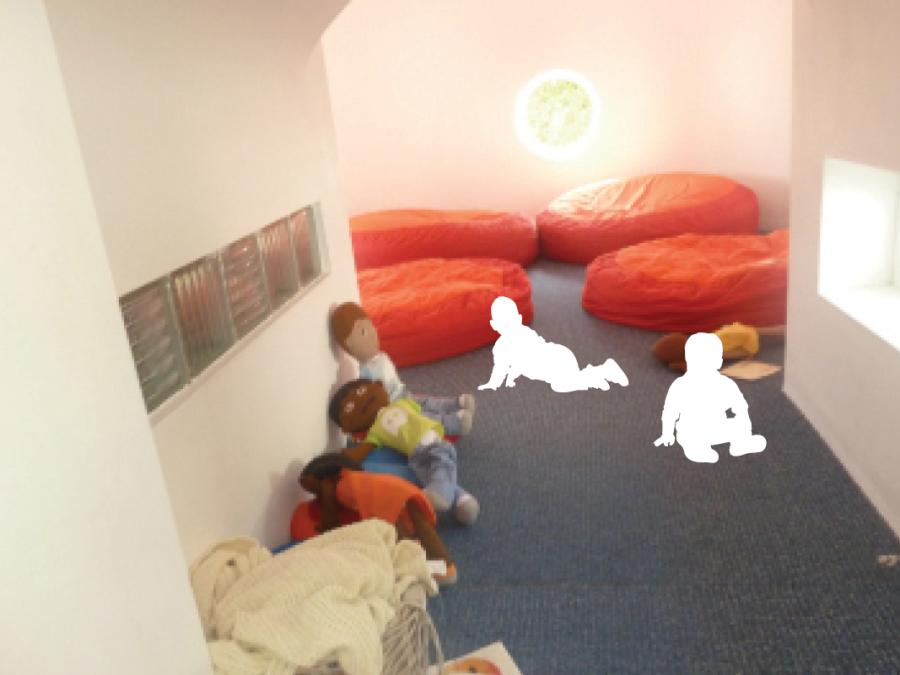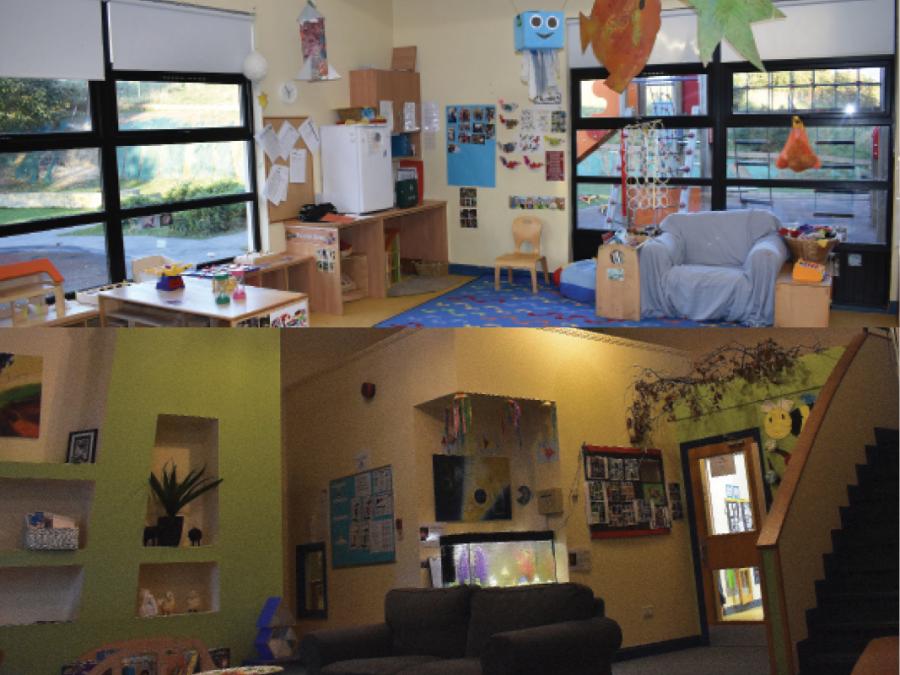Natural and Artificial Light
Design considerations and awareness
Creating ‘lightscapes’ is an important part of the Italian Reggio Emilia approach. Both natural and artificial light are used to emphasise or play with space, texture, colour, shadow, and light modelling to create a multisensory environment for children. The use of blinds, curtains and dimmer switches enhances this.
Natural and artificial light is also vital for ‘placemaking’ where light can be used to create a sense of place, make a space more recognisable, and reinforce the sense of identity attached to a particular place. These are important issues in ELC settings.
Lighting plays an important role in the creation of ambiance and atmosphere, where bright light is used for activity and stimulation, while softer light helps with rest and relaxation. Sleeping areas should have the facility to dim lights or block out daylight using black-out blinds or curtains.

31. Naíonra Choill Mhic Thomasín, County Waterford
Naíonra Choill Mhic Thomasín, County Waterford.
Design features
- The use of glass blocks, circular and rectangular windows in the space for children maximises the natural light, while avoiding glare.
Lighting is important for sensory experience, placemaking, and ambience. There are some UD issues to be considered in terms of lighting, including the provision of higher levels of evenly distributed illuminance, or the reduction of glare.

32. Tigers Childcare, Blanchardstown, Dublin
Tigers Childcare, Blanchardstown, Dublin.
Design features
- Two very different kinds of lighting within two different spaces in the same setting. The top image shows a well-lit children’s space with plenty of natural and artificial light. The bottom image shows how artificial light can create an ambience using dimmable ceiling hung lights and fish tank lighting within a
darker central or social space.
Design Tip
- Higher levels of lighting should be achievable within the social space through dimmable lights that can be turned up or through additional lighting that can be turned on as required.
- Artificial lighting should be carefully designed to avoid glare.
Note: For more information about lighting see Tusla (2018) Quality and Regulatory Framework: Full Day Care Service and Part-Time Day Care Service.
Universal Design Guidance
- Good levels of natural light throughout the building reduces the need for artificial lighting and benefit people who may be sensitive to some forms of artificial light.
- Good levels of natural light benefit many people with sensory, physical or cognitive difficulties by providing higher levels of illumination.
- Glare from direct or indirect sunlight should be controlled as this can cause visual discomfort or difficulties for some users and result in excessive heat build up within the room unless the glass is solar reflective.
- Provide evenly distributed illumination to avoid harsh contrasts or excessive shadows which can cause visual difficulties for some users.
- Recommended levels of illumination for the internal environment:
| Location | Level of illumination (lux) |
|---|---|
| Entrances | 150 |
| Corridors, passageways and walkways | 150 |
| Steps ramps and landings | 200 |
| Lift landings and lift cars | 200 |
| Lift control panels | 100 |
| Toilets, shower rooms and bathrooms | 200-300 |
| Reception desks | 250 |
| Directional signs, maps and information displays | 200 |
| Play room | 300 |
| Handicraft room | 300 |
- Provide task lighting to enhance task visibility or to provide higher levels of illumination to specific areas such as steps or ramps.
- Careful colour rendering and tonal contrast to ensure spaces and objects are visible for occupants with sensory, physical or cognitive challenges or who are colour blind.
- Ensure good levels of natural and artificial light for people who need to lip read.
- It is important to avoid glare, flicker and unwanted noise from light fittings.




